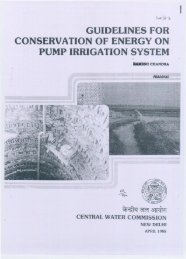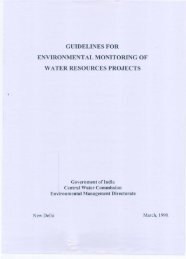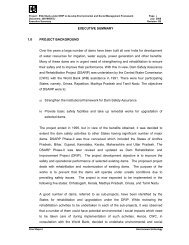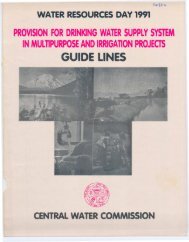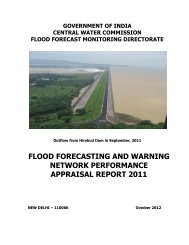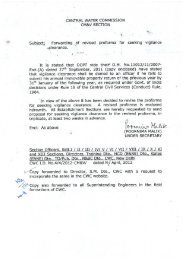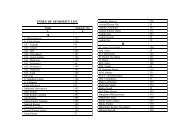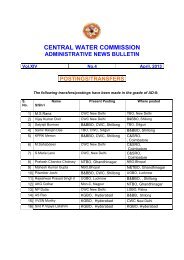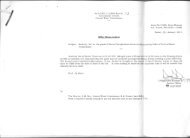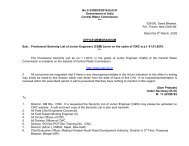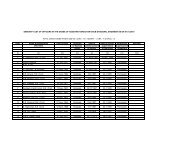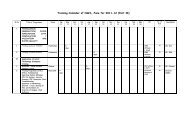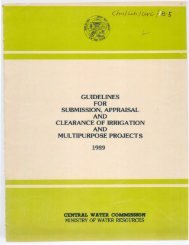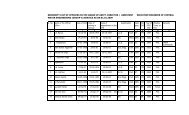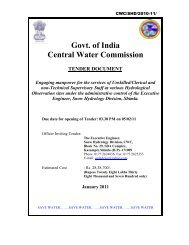Guidelines for Safety Inspection of Dams - Central Water Commission
Guidelines for Safety Inspection of Dams - Central Water Commission
Guidelines for Safety Inspection of Dams - Central Water Commission
Create successful ePaper yourself
Turn your PDF publications into a flip-book with our unique Google optimized e-Paper software.
magnitude <strong>of</strong> recently adopted probable maximum floods <strong>for</strong> dam<br />
sites in comparable hydrologic regions. Where the review <strong>of</strong> such<br />
experience data indicates that the recommended spillway design<br />
flood would not cause overtopping, additional hydraulic and<br />
hydrologic determinations will be unnecessary.<br />
3.6 Evaluation <strong>of</strong> structural stability<br />
The Phase I evaluations <strong>of</strong> structural adequacy <strong>of</strong> project features<br />
are expected to be based principally on existing conditions as<br />
revealed by the visual inspection, together with available design<br />
and construction in<strong>for</strong>mation and records <strong>of</strong> per<strong>for</strong>mance. The<br />
objectives are to determine the existence <strong>of</strong> conditions which are<br />
hazardous, or which with time might develop into safety hazards,<br />
and to <strong>for</strong>mulate recommendations, pertaining to the need <strong>for</strong><br />
any additional studies, investigations or analyses. The results <strong>of</strong><br />
this phase <strong>of</strong> the inspection must rely very substantially upon the<br />
experience and judgement <strong>of</strong> the inspecting engineer.<br />
3.6.1 Design and construction data<br />
The principal design assumptions and analyses obtained from the<br />
project records should be assessed. Original design and<br />
construction records should be used judiciously, recognizing the<br />
restricted applicability <strong>of</strong> such data as material strengths and<br />
permeabilities, geological factors and construction descriptions.<br />
Original stability studies and analyses should be acceptable if<br />
conventional techniques and procedures were employed,<br />
provided that review <strong>of</strong> operational and per<strong>for</strong>mance data<br />
confirm that the original design assumptions were adequately<br />
conservative. The need <strong>for</strong> such analyses, where either or none<br />
exist or the originals are incomplete or unsatisfactory, will be<br />
determined by the inspecting engineer, based upon other factors<br />
such as condition <strong>of</strong> structures. Design assumptions and<br />
analyses should include all applicable loads, including earthquake<br />
and indicate the structure’s capability to resist overturning,<br />
sliding and overstressing with adequate factors <strong>of</strong> safety. In<br />
general, seepage and stability analysis comparable to the<br />
requirements <strong>of</strong> paragraph 4.4 should be on record <strong>for</strong> all dams<br />
in the high hazard category and large dams in the significant<br />
hazard category. This requirement <strong>for</strong> other dams will be subject<br />
to the option with the inspecting engineer.<br />
13



